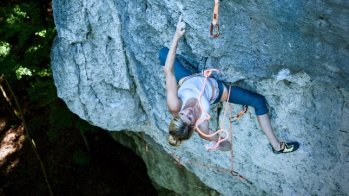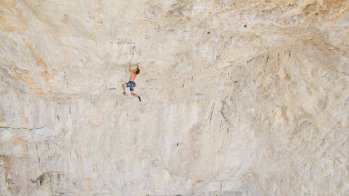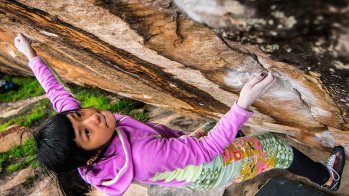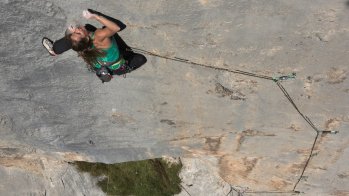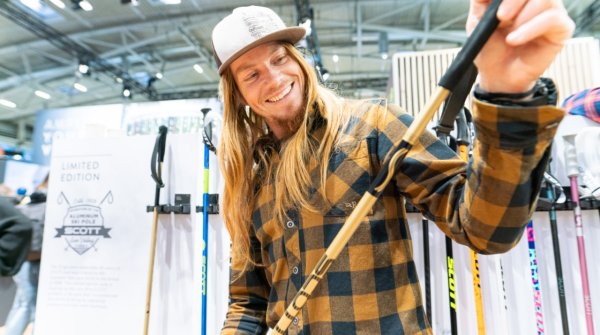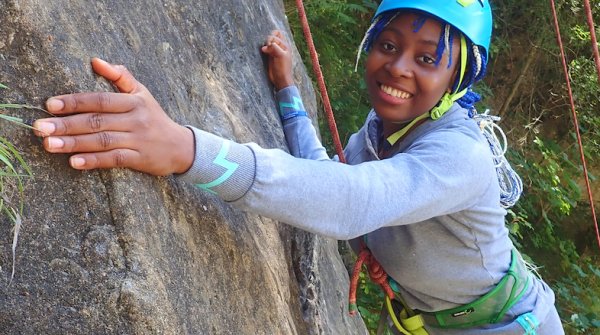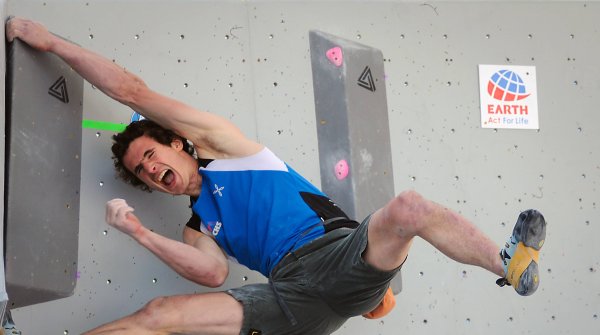
With around five million indoor climbers at present, the USA also plays a leading role in this sport - also thanks to climbing stars such as Chris Sharma and Margo Hayes. At its annual conference in Loveland, Colorado, the US Climbing Wall Association (CWA) brought together hall operators and industry and highlighted the most important trends for the future of climbing. Our author Hannes Huch has been there and summarizes the most important trends.
Find out more about indoor climbing from the 30th of June to the 3rd of July at OutDoor by ISPO in Munich. In Hall A6, the Indoor Climbing Hub will be a separate focus area for climbing and bouldering. Among others, Bill Zimmermann, CEO of the Climbing Wall Association, will report on developments in the North American climbing hall market.
In the last decade many halls have been opened here and on the other side of the Atlantic simply because it is an obvious possibility for climbers to make their hobby their profession. And because climbing is on everyone's lips and promises seemingly endless growth in the indoor segment. This time is certainly coming to an end.
In many German cities it is evident that the market is saturated. The consolidation phase now follows. It is no longer enough just to climb well yourself to fulfill the mammoth task of satisfying the ever more demanding customers.
Emily Moore, the organizer of the CWA conference, also emphasizes this integral point: "It is becoming more and more important to consider exactly what you stand for. Why do you do what you do? This is enormously important for customers and the team." For Moore this can be seen in many areas: Leadership, marketing, coaching and even into the field of route screwing.
Or in other words: Many climbing halls will have to answer the question about their "Unique Selling Point". And this is not only communicated in silence, but also professionally to the outside world. To sharpen their profile and distinguish themselves from their competitors with a distinctive character.
Adam Ondra, Alex Honnold and Co: These Are the World's Strongest Climbers
In the dim and distant past of indoor climbing, felt in the 80s, fanatically motivated rock freaks pulled on homemade mini walls, mostly installed in gloomy basements. It was the emergency solution when nothing worked at all on the rock - due to the weather. Even today there are such time-honored rooms in many DAV sections. Here the freaks stayed among themselves, Newbies usually did not come a second time after their first visit.
With the advent of commercial bouldering halls, the hour seemed to have struck for these dusty chambers: Light-flooded, supplied with the best coffee and bouldering, and sometimes with beautiful architecture (such as the Dresden Mandala) - who still wants to be in the cellar and climb under neon light?
The Americans have now united the best of both worlds and call this "kiosk". A kiosk is a kind of mini boulder hall for ambitious climbers - deliberately not in dark basement rooms - because everyone knows how bad this atmosphere is for motivation. And motivation is everything if you want to improve in sport.
The second key to success with these kiosks is focusing on innovative system walls.
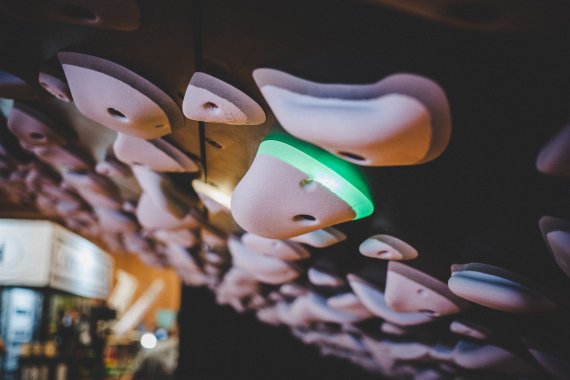
The "Moonboard" of the English climbing legend Ben Moon was the first climbing wall to be delivered with a standardized handle set and an app. Users could create their own problems based on the numbered handles and kicks, save them in the app and thus enter into an exchange with a worldwide community.
The hook on the moonboard: Due to the fixed inclination angle of 40 degrees and handles of the rather bad type, it only appeals to very ambitious users. You have to have something in your arms to be able to do the warm-up bouldering at all, which the modest Brit Moon of course notices with satisfaction.
The makers of the "Kilterboard" have the typical American vision of "building the best board there is". This is first of all reflected in very ergonomic handle shapes, in a type of LED lighting that backlights the entire handle and last but not least in the possibility of freely selecting the inclination.
This allows both beginners and professionals to train on the same wall without getting bored or risking injuries. In the USA, the first kiosks are already opening that set up several kilterboards at the same time because they can serve the needs of many customers on a relatively small area.
The user generated content is also a success factor here, because who doesn't want to exchange ideas with a worldwide community and add their own mite to the database, i.e. save their own problems in the app.
One aspect that is often ignored was also eagerly discussed at the CWA conference in Loveland: Ultimately, a successful visit to the climbing hall is above all an emotional experience for the end customer. And this can neither be significantly influenced by sophisticated digital developments nor by the very latest grip shape.
It still depends very much on whether and how an operator manages to create an atmosphere in which the athlete's heart feels stimulated to give everything. At the same time, the hall must invite you to feel at home.
Of course, this also has to do with the first point - a convincing corporate identity that speaks a clear language.
But the challenge of an all-round successful experience cannot be mastered on its own. I agree with my North American colleagues that it takes a strong enthusiasm of one's own for this sport to understand the emotional needs of its customers.
Also in America, areas of neuromarketing (such as Limbic Map) were discussed in order to turn happy climbers into returning customers.
The Climbing Wall Association was originally part of the "Outdoor Recreation Coalition of America", but after a restructuring of the parent organization in 2003 it was spun off as an independent subsidiary. The CWA's mission is to promote the growth and professionalization of the climbing hall industry.
As a classic interest group, they not only advise operators, but also maintain a close relationship with the equipment industry. New safety standards are jointly developed or measures designed to promote sport and expand the market.
The CWA represents the interests of commercial climbing hall operators in a variety of ways and regularly negotiates CWA member discounts with partners from industry.
About the author: Hannes Huch has been climbing for 33 years and is a graduate designer. With "Café Kraft" he founded one of the internationally most famous bouldering halls and since 2019 he and his wife Marion Hett have been running a design and strategy consultancy for the outdoor sector: www.hetthuch.com
- ISPO awards
- Mountain sports
- Bike
- Design
- Retail
- Fitness
- Health
- ISPO Job Market
- ISPO Munich
- ISPO Shanghai
- Running
- Brands
- Sustainability
- Olympia
- OutDoor
- Promotion
- Sports Business
- ISPO Textrends
- Triathlon
- Water sports
- Winter sports
- eSports
- SportsTech
- OutDoor by ISPO
- Heroes
- Transformation
- Sport Fashion
- Urban Culture
- Challenges of a CEO
- Trade fairs
- Sports
- Find the Balance
- Product reviews
- Newsletter Exclusive Area
- Magazine


